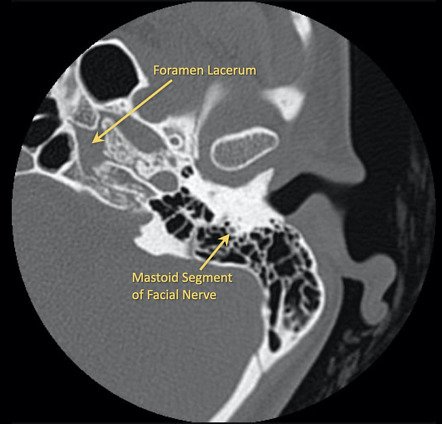HRCT Chest / Temporal Bone (Cochlear Imaging )/PNS
HRCT is an advanced CT scanning technique that produces extremely detailed, high-resolution images of small anatomical structures.
-
HRCT Chest focuses on the lungs and airways, offering clear visualization of lung parenchyma, bronchi, and pleura.
-
Temporal Bone (Cochlear Imaging) is used to examine the delicate bones and cochlear structures of the ear, crucial for hearing-related assessments.
-
PNS (Paranasal Sinuses) Scan evaluates the sinuses for inflammation, infection, blockages, or other abnormalities.

Types of HRCT Scans Offered
HRCT Chest – Evaluates lung diseases like interstitial lung disease, pulmonary fibrosis, bronchiectasis, and infections.
HRCT Temporal Bone / Cochlear Imaging – Assesses middle and inner ear structures, cochlear implants, congenital ear abnormalities, and hearing loss causes.
HRCT PNS (Paranasal Sinuses) – Checks for sinusitis, nasal polyps, anatomical variations, and chronic sinus disease.
Common Uses of the Procedure
Detecting lung diseases, infections, or fibrosis (HRCT Chest)
Evaluating hearing loss, middle/inner ear disorders, or cochlear implant planning (Temporal Bone Imaging)
Diagnosing chronic sinusitis, sinus tumors, or nasal blockages (PNS Scan)
Assessing trauma, congenital anomalies, or pre-surgical planning for ear or sinus surgeries
How Do I Prepare for My HRCT Scan?
Usually, no special preparation is needed.
Wear comfortable, loose-fitting clothes; you may be asked to change into a gown.
Remove metal objects like jewelry, glasses, or hearing aids before the scan.
If contrast dye is used (rare for these scans), you may need to fast for a few hours.
Inform the technologist if you are pregnant, have allergies, or have kidney problems.
What Will Happen During My HRCT Scan?
You will lie on a movable table that slides into the CT scanner.
The technologist will position you comfortably and may provide pillows or supports.
The scanner will rotate around the targeted area (chest, temporal bone, or sinuses) to capture precise images.
You may be asked to hold your breath briefly during chest scans to avoid motion artifacts.
The procedure is quick—usually 10–20 minutes—and is completely painless.
Reasons for an HRCT Chest / Temporal Bone / PNS Scan
Persistent cough, shortness of breath, or unexplained chest symptoms (HRCT Chest)
Hearing loss, ear discharge, chronic ear infections, or pre-cochlear implant evaluation (Temporal Bone)
Chronic nasal congestion, facial pain, sinus headaches, or suspected sinus disease (PNS)
Why Skeletal and HRCT Imaging is Used
Skeletal CT: For detailed evaluation of bones, fractures, trauma, infections, or bone tumors.
HRCT Chest / Temporal Bone / PNS: For superior soft tissue and bone interface resolution, helping in early detection and precise treatment planning in lung, ear, and sinus conditions.
